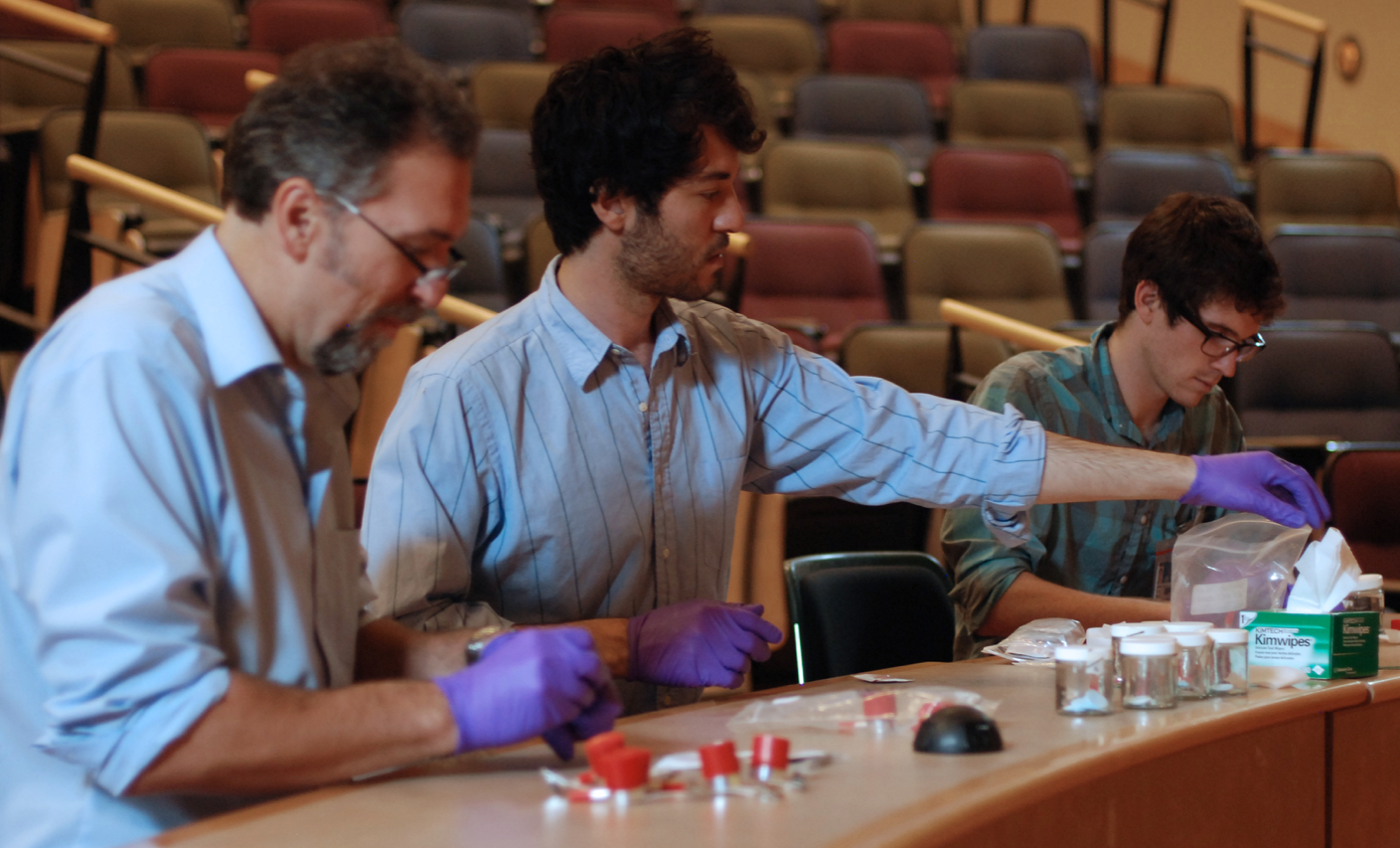I recently gave a lecture on research methods to Siobhan Rockcastle’s ARCH 410/510 Human-Centric Environments course at the University of Oregon. Choosing the design of the UO’s Lillis Hall (ca. 2000) and BioBE’s subsequent sampling campaign (2010) as a case study, I had an opportunity to tell stories about both the architectural and energy design process and the later microbial research of one of my favorite buildings.
 Lillis has been a rich vehicle of learning. I was reminded of the variety of design studies ESBL performed – site analysis, physical and computer simulations, natural ventilation controls sequence specification, and full-scale prototypes (the Energy Studies in Buildings Lab is the architectural side of BioBE) – and the diverse data BioBE collected in our first large scale project – bacteria communities using 4 methods of collection, architectural design and construction documents, building controls systems trends, Registrar class data, field observation and audits, sensor data acquisition, photos, and more became part of the rich dataset.
Lillis has been a rich vehicle of learning. I was reminded of the variety of design studies ESBL performed – site analysis, physical and computer simulations, natural ventilation controls sequence specification, and full-scale prototypes (the Energy Studies in Buildings Lab is the architectural side of BioBE) – and the diverse data BioBE collected in our first large scale project – bacteria communities using 4 methods of collection, architectural design and construction documents, building controls systems trends, Registrar class data, field observation and audits, sensor data acquisition, photos, and more became part of the rich dataset.
I took away from the lecture a renewed appreciation for case studies such as Lillis. As a design project it incubated several long-term and fruitful partnerships within the building industry. With regards to BioBE, and besides contributing 3 papers to the relatively new (at that time) scientific literature in the field, Lillis was a tremendous way during the Center’s launch to get architectural and microbial ecology experts to understand each other. It provided a wealth of learning opportunities at many levels for the scientists and students alike. In my mind, these are critical-path collaborations towards solving our grand challenges.
– Jeff Kline